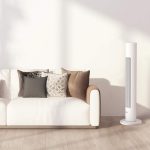How Air Quality Monitors Function

An air quality monitor is a device used to assess pollutants and meteorological parameters in the atmosphere to evaluate air quality and environmental conditions. These instruments are essential for applications in environmental protection, public health, meteorology, and industrial monitoring. Below, we will explore how air quality monitors work and how they contribute to safeguarding our health and environment.
Working Principles
The operation of an air quality monitor depends on its type and the specific parameters it measures. Different models utilize varied sensing technologies to detect pollutants or atmospheric conditions. Below are the common principles of their operation.
Particulate Air Quality Monitors
Particulate monitors typically employ techniques like light scattering, laser diffraction, or mass measurement to gauge the concentration of airborne particulate matter. These monitors assess particle levels by analyzing the scattering or absorption of light. In light scattering, a laser or light source illuminates the particles, and the scattered light is measured. Laser diffraction uses a laser to analyze the diffraction pattern of particles, while mass measurement methods capture particles and calculate their mass to determine concentration.
Indoor Air Quality Monitors
Indoor air quality monitors use sensors to measure temperature, humidity, CO2 levels, and particulate matter. Data from these sensors is sent to the monitor’s data-logging system for continuous analysis and monitoring. These monitors often combine temperature, humidity, wind speed, and barometric pressure sensors to monitor indoor air quality effectively.
How the Air Quality Monitor Works
- Parameter Measurement: The monitor begins by measuring various atmospheric parameters such as gas concentrations, particulate matter, temperature, and humidity. Specialized sensors and technologies are employed for each specific measurement.
- Data Acquisition: Once data is collected, it is typically stored in the internal memory or sent to a data logging system. The acquisition can be continuous, offering real-time data, or periodic for report generation.
- Data Analysis: The data is processed to generate detailed reports, including calculations of averages, maximum and minimum values, and trend analyses.
- Data Transmission: Data is transmitted to a central monitoring station, cloud server, or another storage facility via wired or wireless communication.
- Data Display and Reporting: The air quality data is displayed on the monitor’s screen or via an online interface, and reports are generated for further analysis and decision-making.
- Maintenance and Calibration: Regular maintenance and calibration are essential for accurate results. This involves sensor cleaning, part replacement, and recalibration to ensure continued reliability.
Applications of Air Quality Monitors
- Environmental Protection: Air quality monitors help track pollution levels to ensure that emission sources comply with regulations, thus protecting the environment and human health.
- Public Health: They play a crucial role in monitoring air quality both indoors and outdoors, preventing respiratory illnesses and other health complications.
- Meteorological Research: These monitors collect meteorological data to aid in weather forecasting, climate change studies, and atmospheric research.
- Industrial Monitoring: Industries use these monitors to control processes and monitor emissions, ensuring that their production practices are safe and environmentally responsible.
- Mobile Monitoring: For emergency situations, rapid air quality monitoring can assist in pollution detection during incidents and short-term research projects.
- Indoor Air Quality Improvement: Indoor air quality monitors help control temperature, humidity, CO2, and particulate levels to maintain healthy indoor environments.
In conclusion, air quality monitors are sophisticated devices that combine various sensing technologies to measure atmospheric and environmental conditions. These instruments are indispensable in numerous fields, contributing significantly to environmental conservation and public health. As technology advances, air quality monitors will continue to enhance their accuracy, helping us address environmental challenges and promoting sustainable, healthy living.













